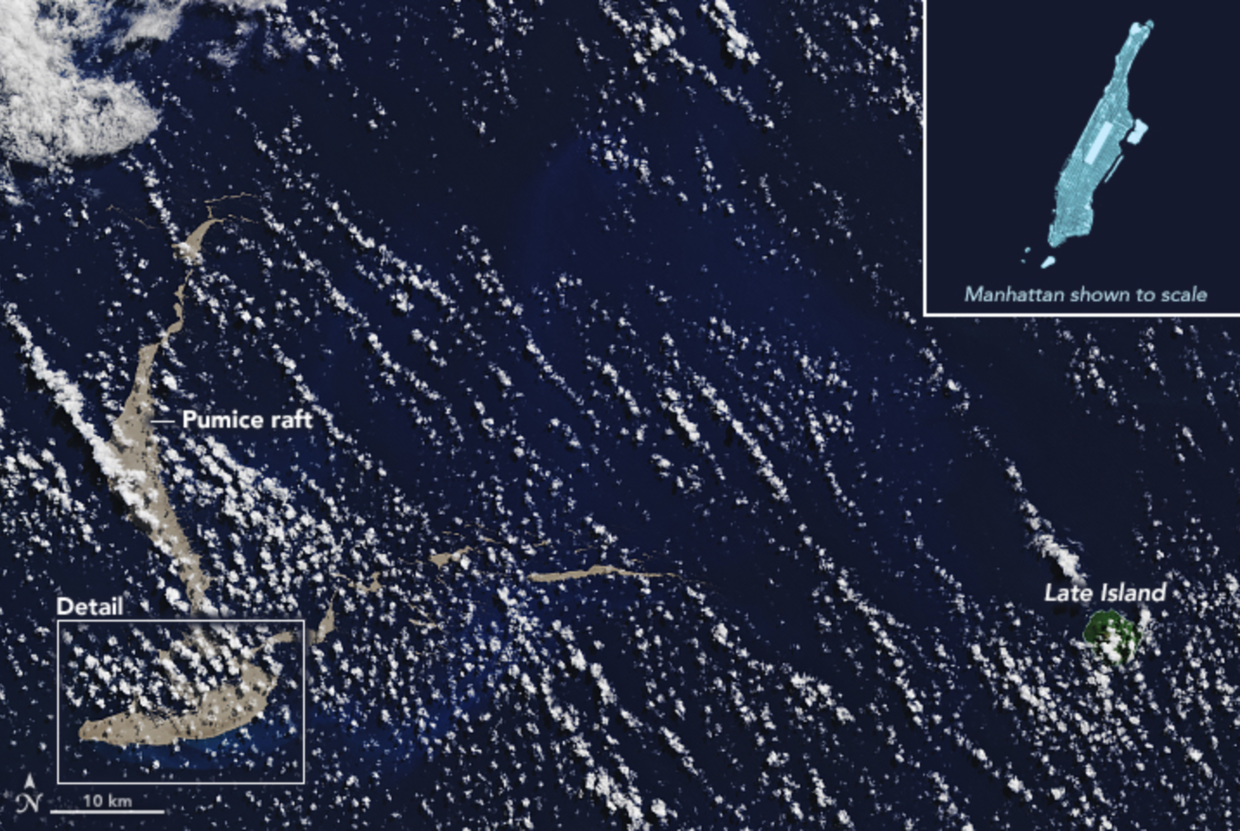The giant volcanic rock pumice, over 20,000 football fields in size, is believed to be the result of an underwater eruption from deep in the heart of the Pacific Ocean, off the coast of Tonga.

The formation is so large it has been spotted on satellite imagery, while several sailors have posted remarkable footage of the unusual new floating island.
“We sailed through a pumice field for 6–8 hours, much of the time there was no visible water,” sailor Shannon Lenz wrote on YouTube.
According to the crew of the Australian adventure catamaran ‘ROAM,’ the light volcanic rocks were so numerous and so dense that they blocked out the ocean’s surface.
“The rubble slick went as far as we could see in the moonlight and with our spotlight,” the crew wrote on Facebook.
Report of Volcanic Rubble Slick dangerous to vessels.Catamaran ROAM sailing to Fiji encountered volcanicrocks…
Posted by Sail Surf ROAM on Thursday, 15 August 2019
Many in the scientific and conservation community speculate that it could greatly benefit the imperilled Great Barrier Reef.
“This is a potential mechanism for restocking the Great Barrier Reef,” geologist Scott Bryan from the Queensland University of Technology (QUT) said.
“Based on past pumice raft events we have studied over the last 20 years, it’s going to bring new healthy corals and other reef dwellers to the Great Barrier Reef.”
The giant floating rock formation may pass through coral reef areas in the eastern Coral Sea, coinciding with the main coral spawning later in the year, which could transform the pumice into a traveling ecosystem replete with algae, barnacles, corals and quite possibly far more lifeforms.
(Source: Russia Today)






 WhatsApp us
WhatsApp us 

